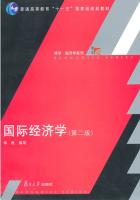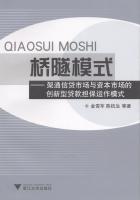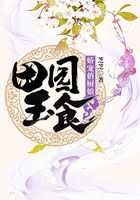Suppose on the same tenant farm an additional crop, say soybeans, was added to the rotation after the share restriction, resulting in a rise in crop area. The crop hectare yield of the added soybean crop would likely be lower than that of another farm where soybeans had been intramarginal. The reason is that if the raising of soybeans on this tenant farm had been consistent with wealth maximization under a free market, they would have been grown. That is, if the added soybeans received the same amount of input per crop area as on another farm where soybeans had been intramarginal, the added crop on the tenant farm would have a lower hectare yield. However, if the added soybean crop received sufficiently high density of planting, its yield still might be higher than elsewhere. In the aggregated data available, we would find a rise in the crop area of soybeans, but the average yield per crop area might rise or fall.
Suppose, however, that this tenant farm continued to squeeze in additional crops for annual rotation over a fixed area of land. There would eventually be a crop which, regardless of planting density, would have a considerably lower yield per crop area than elsewhere. This is so because the better land would be exhausted, the soil depleted, the season unfit, and the planting congested. The last crop which the tenant farm squeezed into the annual rotation would be the marginal crop. This does not mean, of course, that all tenant farms would go to this extreme under the share restriction. The general idea is that a crop which was added at the margin would have a lower yield per crop area than the same crop on another farm where it had been intramarginal. To the extent that the crop hectare yield of this marginal crop in the tenant farm pulled down the aggregated average yield per crop area, the relatively low marginal returns of tenant inputs would be confirmed.
If we are able to identify the marginal crop as described above, and if a large number of tenant farmers simultaneously chose the same crop to add into their crop rotation, the aggregated crop hectare yield for this crop would fall, regardless of the fact that the same crop might have been intramarginal in some farms. It follows that we have here a problem of crop identification. Any crop might indeed be added at the margin, and what in one tenant farm was the last crop to be added might not be the last in another. We shall attempt, therefore, to identify a class of crops whose physical attributes are such that they are likely to be added at the margin. That is, the physical attributes of planting them are such that their being added is consistent with the theory of choice under the share constraint. In still other words, there exists a class of crops which had not been commonly rotated under a free market, whereas under the share restriction, competition among tenants squeezed them in. This class of crops we shall refer to as marginal crops, in spite of the fact that they might not actually be added at the margin on some farms.
From the above it should be clear that under more intensive nonland input commitments, the yield per crop area (hectare) for an intramarginal crop is likely to rise, with a relatively small increase in crop area. On the other hand, for a marginal crop the crop hectare yield is likely to fall, with a relatively large increase in crop area.
[1]. Since Taiwan Agricultural Yearbook will be cited heavily hereafter, its method of data collection deserves attention. According to a letter from Yen-Tien Chang, Commissioner of Taiwan Provincial Department of Agriculture and Forestry, the following information is provided:
(1). The three-level crop-reporters are responsible for collecting all basic agricultural data.… There are 720 township reporters who make field surveys and submit data collected to hsien (county) government. Each hsien (county) government has two crop-reporting inspectors, all together 44 of them, who lead and inspect the township reporters under them. After checking and processing, the county reporters submit the data to the Provincial Department of Agriculture and Forestry.
(2). Per hectare yield is calculated by sample-cutting. Usually one sample is taken from every 100 hectares. Surveys are made four times a year to record changes.…
(3). Other data, such as cultivated area and population, are obtained from the Provincial Land Bureau and the Provincial Department of Civil Affairs respectively.
[2]. Cultivated land is not the same as arable land. The latter area is estimated by the land bureau according to certain geological criteria. Strictly speaking, all land is "arable," but whether or not it is economically worthwhile to cultivate is something else.
[3]. See Sino-American Joint Commission on Rural Reconstruction, "JCRR Annual Reports on Land Reform in the Republic of China," mimeographed (Taipei, 1965), chap. 8.
[4]. Crop area is sometimes called cropping area, crop hectares, the area of plantation, etc. See Arthur W. Peterson, "An Economic Study of Land Use in Taichung Hsien and City, 1960," mimeographed (Taichung: Research Institute of Agricultural Economics, Chung Hsing University, 1961); and Nien-tsing Lu, An Analysis of Farm Family Economy of Owner-Operators under the Land-to-the-Tiller Program in Taiwan (Taipei: Research Department of the Land Bank of Taiwan, 1965).
[5]. The one-half crop of vegetable may mean that only one-half of the hectare of land is being utilized, or that the entire hectare is utilized but only half of the growing time is within the one-year period. The crop area varies greatly depending on land grades and the intensities of nonland inputs.
[6]. Since horticultural crops are "perennial," they are not rotated like "annual" crops. The significance of the decrease in their harvested area will be discussed later.
[7]. Note that we are speaking here of the cost of planting one hectare of the same crop, not the cost per unit of output. To convert one into the other, a production function is required.
B.Output Responses of Intramarginal Crops: Rice















